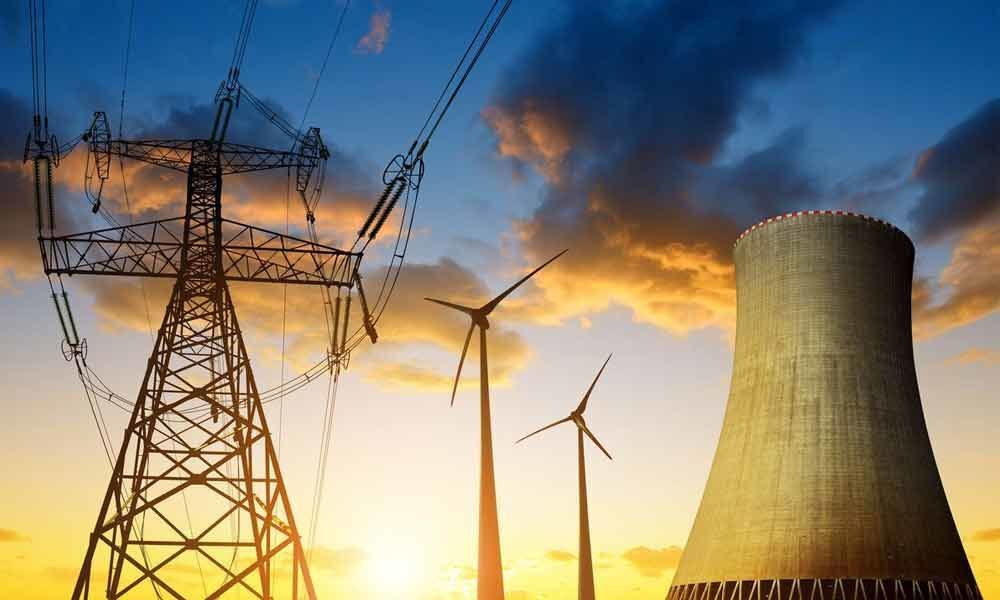Nuclear power helps in combating climate change

When we think of a fuel in the traditional sense, the image that generally comes to our mind is that of a substance burning in flames
When we think of a fuel in the traditional sense, the image that generally comes to our mind is that of a substance burning in flames. In other words, we commonly imagine a fuel to literally combust in order to release energy.
We see around us that energy is released as a result of burning of fuel substances like wood, charcoal, coal, petrol, diesel, gas, etc. This is why we are inclined to believe that all energy releases may be occurring in this manner – that is, through combustion.
In non-technical terms, combustion is simply the 'burning' of a substance. In simple technical terms, it is a rapid chemical reaction between a substance and oxygen which results in an energy release in the form of heat and light.
However, you would be surprised to know that energy release is possible even without chemical combustion.
The underlying process of release of energy from a nuclear fuel is a fundamentally different phenomenon and neither involves any combustion nor any other kind of chemical reaction. In order to understand this, we must first look at how exactly combustion occurs in traditional fuels.
A chemical reaction takes place through interaction of electrons between atoms or molecules. Thus, a chemical reaction involves electrons, which orbit around a tiny atomic nucleus.
It should be noted here that only electrons are involved and the nucleus does not take part in any chemical reaction and remains completely unaffected. So, this is what happens in chemical combustion.
The burning of fossil fuels is a chemical reaction. Consider the example of coal – the most widely used fuel for power generation. Here a carbon atom (C) combines chemically with an oxygen molecule (O2) from air to form a molecule of carbon dioxide (CO2).
Since this is an exothermic chemical reaction (a heat-releasing chemical process), we can use coal as an energy source. Coal is fairly widely distributed on the earth and relatively easy to extract. This is mainly the reason why it has been a dominant energy source for the world for very long.
Other fossil fuels like oil and gas also contain carbon in their molecules, and undergo combustion in a similar manner, to release energy along with carbon dioxide and harmful gases like sulfur dioxide (SO2) and oxides of nitrogen (NOx), etc.
Indeed, fossil fuels are the biggest sources of atmospheric emissions of carbon dioxide – the major greenhouse gas from the perspective of human-induced climate change.
Thus, the more we use fossil fuels, the more we are warming the planet, with disastrous results in the present and the future. This is the biggest downside of fossil fuels.
Carbon dioxide is a greenhouse gas. It is called a "greenhouse" gas because it causes warming of the atmosphere in a manner similar to how an actual "greenhouse" made of glass walls keeps its interiors warm even in the coldest winters. This same analogy is applicable to the earth's atmosphere.
Essentially, a greenhouse gas acts as a thin invisible blanket covering the entire globe and keeping it cosily warm. Greenhouse gases in atmosphere are basically not a bad thing when they are present in very small concentrations and do not cross a certain limit. Let us see why.
The sun's rays strike the earth, flooding the earth with life-supporting energy. However, not all of the sun's rays are absorbed, and in fact a significant portion thereof is reflected back into the space.
What carbon dioxide molecules in the atmosphere do is that they absorb a portion of these reflected rays and redirect a part of them back downwards towards the earth in the form of infrared rays (heat-carrying waves).
Thus, greenhouse gases like carbon dioxide actually cause the earth's atmosphere to retain an extra bit of heat, thus allowing the earth to remain warmer than what it would be if there were no greenhouse gases in the atmosphere.
In that case, the earth would be well below the freezing point. So, this natural phenomenon is good for the living creatures on this planet.
However, when the concentration of the greenhouse gases rises, especially carbon dioxide, then the atmospheric warming also increases correspondingly. This is where the root of the man-made global warming lies.
As we all know that we humans are burning huge amounts of fossil fuels, thus adding more and more carbon dioxide into the atmosphere each year, and this trend is showing no signs of abating.
This is the primary reason we must decarbonize power generation by choosing non-carbon energy sources like nuclear power.
Around 1850, that is before the commencement of the large-scale Industrial Revolution, the atmospheric carbon dioxide concentration was about 280 parts per million (ppm).
With relentless global industrial activity fuelled ever since, primarily fuelled by fossil fuels, humans have been spewing out billions of tonnes of CO2 into the atmosphere year after year. This is severely harmful to the well-being of our planet.
Despite an alarming increase in the devastating effects of climate change, the warnings have gone largely unheeded, and the CO2 concentration in the earth's atmosphere is continually rising. The reasonably manageable limit of atmospheric CO2 concentration is considered to be 350 ppm, but we have already crossed that limit long back and are now at 410 ppm.
If not much is done to reduce carbon emissions rapidly and if we continue to rely on fossil fuels such as coal for power generation in a big way, then we would soon reach a "point of no return" in climate terms. The hope for limiting global warming to 1.5 degrees above the pre-industrial levels is now already being seen as a losing battle.
What's more, even the next target of 2-degrees warming, which is not as safe as 1.5-degree warming, also seems to be in jeopardy. If we allow the earth's atmosphere to warm beyond 2 degrees above pre-industrial era, then the consequences for humanity and the environment would be increasingly dire.
Luckily, there are energy sources that are free from the evils of carbon emissions, like nuclear power. A nuclear power plant generates power by splitting the nucleus of the atoms. In the process, a small amount of mass is converted into a huge amount of energy.
Nuclear power is climate-friendly energy because during the operation of a nuclear power plant, there are no emissions of greenhouse gases or other harmful gases.
Nuclear power is a clean, reliable and emissions-free option for producing electricity without adding to global warming, which is indeed the need of the hour.
Pratap M Anam














